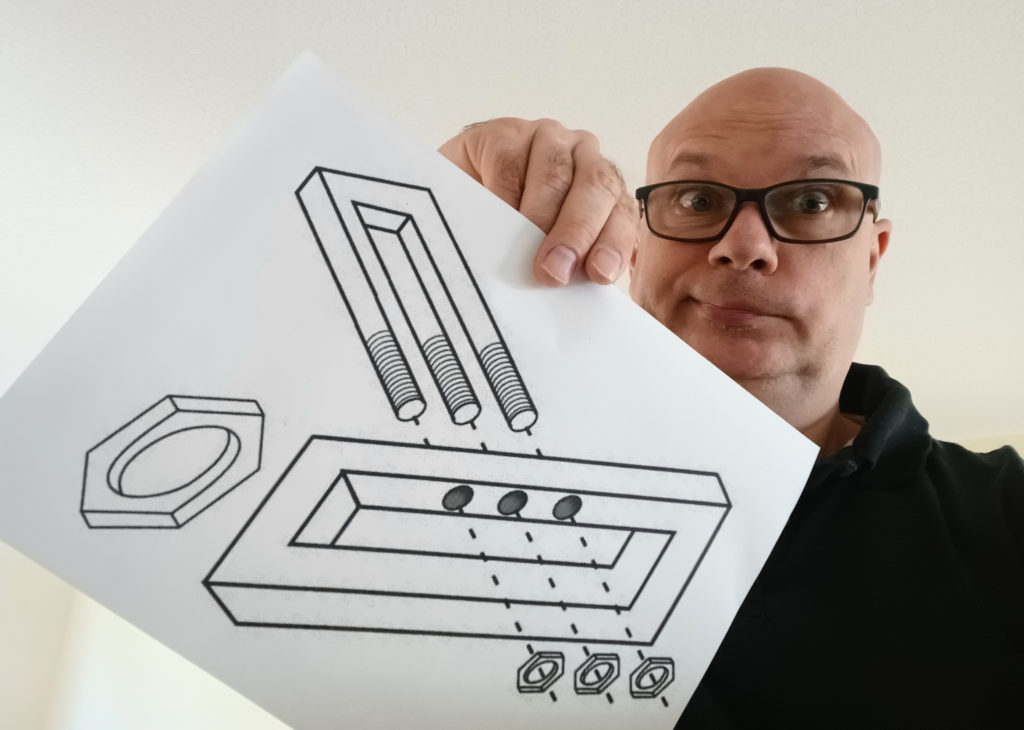
If you’ve ever seen the show “Shark Tank,” you may be inclined to think that developing a new product is as easy as formulating a great idea. All you really need is one great PowerPoint presentation, a killer elevator pitch, some investors and—Boom!—your product will be flying off the shelves, right?
We hate to crush your primetime TV dreams, but there’s a lot more that goes into product development than that. After the initial napkin sketch phase, your next great idea will need to go through conceptual sketching, product design, prototyping, low rate initial production, and final production—not to mention market validation!
But here’s some good news: with proper planning and foresight in the product design phase, you can mitigate risks to accelerate your production timeline and decrease your costs.
Because hindsight is 20/20, we’ve compiled a list of common mistakes often made during product design–so you can avoid them.
Avoid These 6 Mistakes During Product Development
Mistake #1: Designing without having the end manufacturing method in mind.
Design approaches vary depending on the manufacturing method, so it’s important to consider how your product is going to be made at the start of the process. In other words, begin with the end in mind.
A traditional manufacturing method like CNC machining is great when you want to remove as little material as possible. But if your part has intricate geometries, 3D printing or molding is often a better solution, depending on your production quantity.
It’s entirely possible to combine additive and subtractive manufacturing in an approach we call hybrid manufacturing, but again, it’s something you’ll want to decide on up front.
Mistake #2: Choosing cost over value.
When you sacrifice value for initial cost, you often end up paying more in the long run, both in terms of time and money:
A customer of ours had a strong idea but needed help with conceptual development. Our initial quote included product development services to ensure that we got their product functioning optimally before it went into production. They ended up choosing another shop to work with for their prototyping based on cost.
Unfortunately, the other shop made the customer’s product to spec instead of taking the time to evaluate its functionality. The customer received a product that didn’t work. Luckily, they came back to our Jacksonville machine shop and we were able to help them!
Mistake #3: Overinvesting in early prototypes.
The true success of your product can’t be measured until it’s in the hands of your customers. Overinvesting in early prototypes when it isn’t necessary can be a huge drain on your budget.
If the product you’re making has several complex features that need to be tested, it may make sense to create a quick partial 3D print for design verification of that particular feature. But for a more straightforward product, limit the number of early prototypes you create. Instead, put those extra dollars toward market testing and other initiatives that will help accelerate market introduction.
Mistake #4: Overengineering your product.
It’s easy to fall into the trap of overengineering your product. Just keep in mind that complex engineering usually increases cost and lead time and may not be necessary to deliver a great product. That’s especially true for internal components: keep them simple and focused on functionality.
We understand the pressure engineers feel when they’re responsible for the functionality of a part or product—and we know that pressure can lead to overengineering. That’s why we’re committed to being a manufacturing partner you can trust in, to guide you in the right direction. We have the expertise to advise on everything from part features to specific tolerances.
Mistake #5: Unspecified regulatory and intellectual property requirements.
Does your product need to meet any regulatory requirements? It’s important to notify your manufacturer ahead of time if you need certified components, testing, or laboratory verification. The consequences of withholding this information can be costly and time-consuming.
Also, be sure to check for existing patents that might impact your design. You don’t want to reach the end of the product development process only to find that your product has infringed on someone else’s intellectual property.
Mistake #6: Trying to do too much on your own.
The DIY approach to product development can seem tempting, but there are costly risks every step of the way. At Polyhistor, our team of experts can guide you through the entire process. Whether you’re in the napkin sketch stage, designing for manufacturing, or are ready to hit go on production, we’ll provide you with the engineering and manufacturing services you need to be successful.
Request a quote today and let’s get started!
